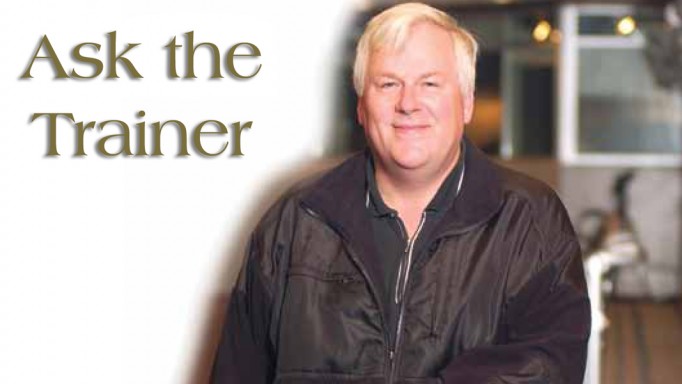CT: How can a stay-at-home trainer have their horses ready to battle the invading winter-raced, trained rivals?
RT: Nowadays, I think we might be better off having our horses in Canada for the winter. With Woodbine having Polytrack, not all the shippers from the U.S. in the spring are going to handle the surface. Sure they are dead fit, they have a little bit of an edge, but I don’t think it is as big an edge as it used to be. Our season is very long, racing a horse through the entire year is stupidity, we want our horses to last.
CT: The long Woodbine racing season ends in December and starts up again in April, where do you winter your horses?
RT: About 99% of the horses I train winter at Buttigieg Farm in Egbert, Ontario, a few others will winter at other farms. Depending on the horse and when they last raced, each one gets a rest, some turn out time in the paddock before they will start exercising again.
CT: When do your horses start getting ready for the opening of the new season?
RT: If a horse raced in October, November or December, they will likely get six weeks off, turned out, hopefully they will be in the snow for a bit. At the end of the first week of January, they will start doing some light jogging in the indoor arena. The ones that raced in the fall, they will be the easiest to get ready for the spring, they are essentially already fit.
The ones who are unraced or have been off longer, they won’t likely be ready to take on the winter raced horses in the spring first time out.
CT: So, how do you start up your training?
RT: When they come in from their turn-out, the ones who were racing in the fall will have maintained some of their fitness by running around in the field. They start with jogging and light gallops, gradually going longer distances in the arena.
By the time they come into the track they may have had even a workout within two weeks of shipping to me. Those horses who did not race in the fall and are coming off a long layoff or have never raced, well they are going to be a bit later to the races simply because of gate training. They will need a gate card.
CT: What distances would you work your horses at if they are scheduled to start early in the meeting?
RT: The horses that raced last fall would be ready quicker, so I would give them, at the minimum two, four-furlong workouts for races at five furlongs (most of the races at the beginning of any track’s season are at short distances).
CT: The proof is in the pudding: you had Frank DiGiulio’s three year- old gelding Oh Canada primed to win the Woodstock Stakes last April 16, defeating Florida-raced Black n Beauty. What was his workout schedule?
RT: You have to get lucky and not have any hiccups along the way; no sickness or injuries. Oh Canada had raced the previous fall and he had the following workouts before the Woodstock:
Feb. 25, 2011, dirt training, 3 furlongs, :35.80 (3rd fastest of 38)
Mar. 4 dirt training, 3f, :37.00, 58/138
Mar. 13, Polytrack, 4f, :48.80, 5/43
Mar. 24, Polytrack, 4f, 50.80, 27/43
April 1, Polytrack, 5f, 1:01.00, 4/34
Apr. 9, Polytrack, 5f, 1:00.60, 15/94
That’s six timed workouts in six weeks. I try not to work my horses fast, if they do, they better have been doing it on their own, without a lot of urging. I am not overly concerned about their times, just the way they do it. With Oh Canada, he got more out of his works when he had company for those last two works, I had him matching up with another stablemate.


